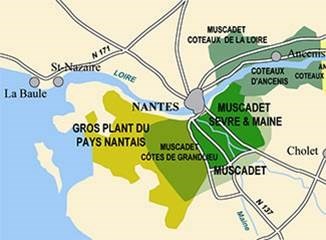Domaine Julien Braud

After his engineering studies in wine production from the vineyard to the cellar, followed by experiences with a few vintages on the family estate (Fief aux Dames), in 2012 Julien Braud ventured on his own with a vision: working in a way that highlights his regional terroirs and the qualities of the Melon de Bourgogne grape variety. From the three hectares he started with, and cultivated during his first year, vintage after vintage he gradually increased the surface area to a 13 hectare vineyard. The estate is certified organic. In 2021, his wife Apolline joined him on the estate, and together they work to produce authentic wines with distinct character. Recently Julien Braud takes over his parents’ estate, Fief aux Dames domain.
Soils
At Domaine Julien Braud plots are characterised by three different terroirs:
- Amphibolite produces easy-drinking wines,
- Shallow, sand-silt soils formed from the alteration of gneiss bedrock produce fruity wines while young. They open after a few years on floral and mineral aromas
- Coarse-grained gabbros gives richer and fuller wines on the palate which open after a few years on menthol, anise and liquorice notes.
About Muscadet Sèvre et Maine

There are three regional appellations of Muscadet sur lie that undergo maturing on lees: Muscadet Sèvre et Maine, Muscadet Côtes de Grandlieu, and Muscadet Coteaux de la Loire. Together these three appellations form the core of Muscadet wines.
Winemaking
Matured for at least six months on lees, Muscadet Sèvre et Maine wines perfectly reveal their invaluable terroirs. They are structured wines with a good deal of minerality; these characteristics are complemented by fullness, depth and aromas of warm or damp pebbles, depending on the soils on which each wine is grown. The best vintages offer excellent aging potential.
The Terroirs
Recognized in 1936, Muscadet Sèvre et Maine is one of France’s oldest AOCs. It is the largest regional appellation of the Nantes wine region in terms of surface area and production volume, with 6400 hectares (15,808 acres) and 425 winegrowers. Located between the Sèvre and the Maine, the two last tributaries of the Loire before it reaches the ocean. Its soils—composed of gneiss, orthogneiss, granite, schist and gabbro—offer great diversity.
Source : https://www.muscadet.fr/en/


